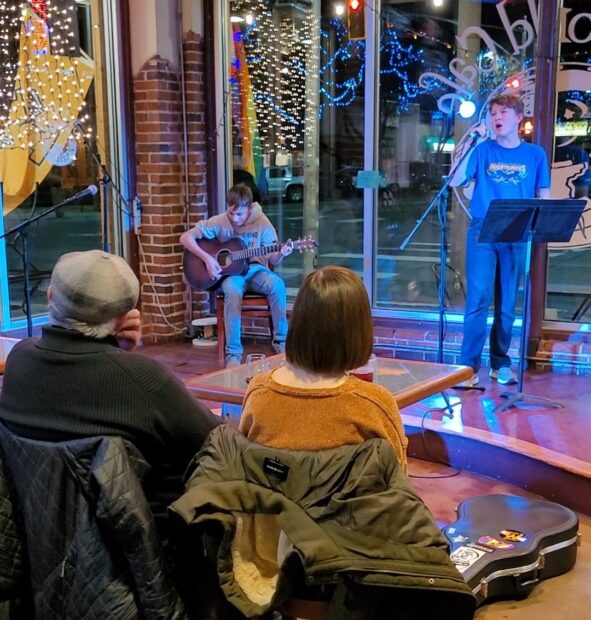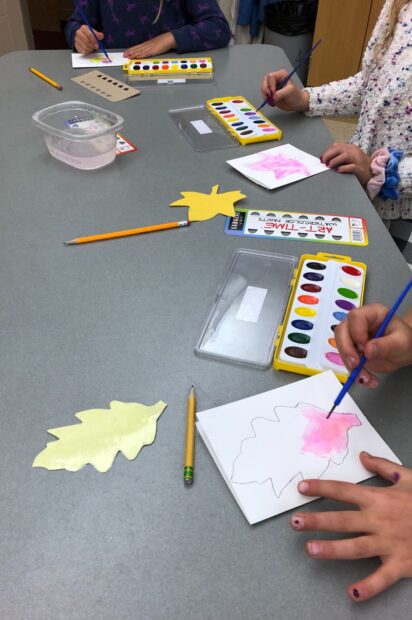BOISE — The Idaho Commission on the Arts released its second annual round of grant winners in June for Gov. Brad Little’s Expanding Arts Access in Rural Public Schools program.
These rural arts grants will fund up to $15,000 for 72 rural schools to improve student arts programs (with only two schools to receive less than $9,000).
Teachers say that this funding is essential for the lifeblood of arts departments to take root in sparsely populated areas. They also celebrate the award’s specificity.
“It was a surprise to everybody,” Nezperce music teacher Joe Campbell told Ed News. “Here’s this pot of money, and it can only be used for arts, and it can only be used in rural schools, which is really kind of nice.”
Educators in schools with fewer than 20 enrolled students per square mile or school districts within counties of less than 25,000 residents can apply for up to $15,000 in state money (as defined by Idaho Code). Though the program comes from the governor’s office, Idaho’s State Department of Education supports rural arts grants as a gateway to student success.
“Rural communities should have an equal chance at enjoying both the potential educational, economic and community-building benefits that the arts can offer,” said the SDE’s Maggie Reynolds.
Award money pays for materials for educators to boost creative options and extend opportunities for students in sparsely populated areas. Injecting money into arts, according to award recipients, not only helps an artistic curriculum, but cultivates important soft, interdisciplinary practices like critical thinking in addition to hard, relevant professional skills.
“That’s a big plus of this program: it fits with what people are going to do in their lives,” Campbell said. “When you start looking at all these jobs that are out there for people who can produce music — doing sound and voiceover and all this stuff that you learn — all of a sudden, there’s a lot of career paths.”
Rocking out transferable skills in Nezperce
This is the second year that Campbell has received the rural arts grant for Nezperce’s required “modern band” course of study. Modern band is a focus on producing modern music as opposed to traditional band standards. Campbell indicated that this musical modernity was necessary to resuscitate a once celebrated musical tradition in the 180-student Nezperce Joint District.

“To have a successful band, just to cover all the parts, you really need 50 to 60 kids in a traditional band. We don’t have that many kids in our high school to begin with,” Campbell said.
Nezperce has a tradition stemming back to the 1950s when “hall of fame” music educators would flock to be a part of the reservation town’s music program, according to Campbell. When that momentum slowed, though, the road back was rocky.
“The kids weren’t buying into the program. We lost that tradition. If you lose the tradition, it’s really hard to get it back,” Campbell said.
While music was still a compulsory course for K-8 students, Campbell was “burning out” trying to propel the program forward. Instead of quitting, however, Campbell got creative.
Serendipity and research led him to the “Little Kids Rock” (now “Music Will”), a nonprofit organization that offered a student-driven curricular framework. Students play, perform, improvise and compose self-selected songs from modern rock, pop, Latin, rap, R & B, and other emerging styles.
Even though the program was only offered in large, metropolitan areas like Chicago, Dallas, Miami, and Los Angeles in the early 2010s, Campbell talked officials into piloting the program in tiny Nezperce.
The program has since flourished inside and outside of the classroom. Instead of trumpets and oboes, Nezperce students play the guitar, keyboard, and drums while a singer belts out tunes by Billy Eilish while shaking the tambourines.
Among the program’s previous grants was money to build a recording studio, which has allowed kids to break into the recording side of music. One graduated senior even recorded their own album while another incoming senior plans to do the same.
From Nezperce’s standing as the first Music Will modern band program in the Northwest, Caldwell has helped spread the program throughout Idaho and across the region. In American Falls, Bishop Kelly, Moscow, and West Ada, the Idaho Music Education Association has helped to match teachers to mentors like Campbell to give students the opportunity to rock.
A $14,536 rural arts grant will build upon this foundation and extend Nezperce’s arts reach.
The 2022 and 2023 awards help to upgrade the district’s 1960s-era performance stage. From sound system to lighting, this six-decade old setup needed revision. Not only will this new setup improve the technical quality of music productions, but it will aim to resurrect Nezperce’s moribund drama program.
While drama is not yet an option, a district math teacher has teamed up with Campbell to spearhead this effort to stretch the school’s stage offerings.
Diverse artistry in Garden Valley
In Garden Valley, a similar arts program has sprouted aspirations to grow further creative branches, fed now by its first $15,000 rural arts grant.
Like many small school teachers, Michelle Ogle’s efforts stretch to the corners of the 286-student district. The art teacher, cross country coach, extracurricular mentor, and soon-to-be vice principal ripples arts projects throughout the K-12 school. For Ogle, art is like that great teammate, the glue guy, that can be thrown into any lineup to hold things together.
“It’s the great bridge builder. It’s so interdisciplinary by nature that I could make connections with any single one of my peer teachers and support what they’re doing,” Ogle said.
Ogle, for example, worked closely with Garden Valley kindergarten and first grade teachers to incorporate early language building and early literacy over the last two years. She used online books for students to launch art projects that made connections with characters and context, plot and purpose.

Ogle’s core arts classes already radiate across the creative spectrum with offshoots in extracurricular activities and in summer camps — landscape and plein air painting, fiber arts, and bookmaking, to name a few.
Garden Valley’s $15,000 rural arts award will go towards expanding students’ inventive expression. This includes damp boxes and other materials to broaden ceramics projects, a new printmaking station, leather and bead work, calligraphy instruments, and ceramics materials that help her students experiment in a variety of artistic pursuits that highlight traditional forms with roots in the region.
“My hope is that we can just keep building on the program and offering more because a lot of these kids’ worlds are fairly insulated because they live in such a small place,” Ogle said. “My goal is to broaden their world, to make it better by showing them what’s out there.”
Exposing kids to this variety, however, has a purpose beyond simple experimentation.
“When they get to high school, they’re managing their own gallery,” Ogle said. “They photograph their own artwork, they write artist statements, and those artist statements are where they’re making connections with how their own ideas are being used.”
Utilizing the online Artsonia gallery, this portfolio begins in elementary school, offering students a potential ten years of developing skills and speaking with an expressive tongue.
“Art is a universal language. It has a magical quality to it,” Garden Valley art teacher Michelle Ogle said. “So many of the skills that I teach, anybody can learn them. And it’s so fluid like you can adapt it so easily for anybody.”
For Ogle, this adaptation translates to an at once larger and smaller role in Garden Valley’s arts program.
Next year, another teacher will take over her elementary school arts classes, so she has time to teach while serving as vice principal. This is, in part, to move aside for another educator to found a graphic design CTE program, another arts-based subject that will aspire to boost student success after high school.
A thriving arts industry that reaches rural places
Even though its ends are creation, arts’ means develop interdisciplinary skills — abstract visualization, problem solving, collaboration, marketing, management, and more — can apply to a multitude of subjects and subsequent careers (per the University of Michigan). After COVID-related decreases, economic activity in arts and cultural activity amounted to $1.02 trillion in the United States, good for 4.5% of the country’s GDP in 2021 (according to the U.S. Bureau of Economic Analysis).
The source of this industry remains the schools that provides arts to students.
“Creating an arts industry in any area relies on art education, and this grant makes this important first step possible for our rural Idaho communities,” SDE said.
